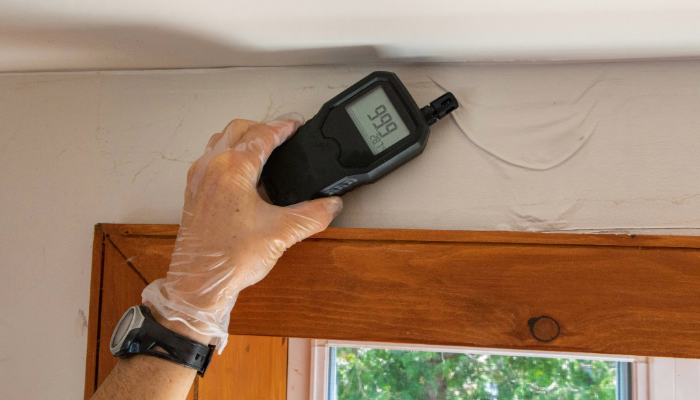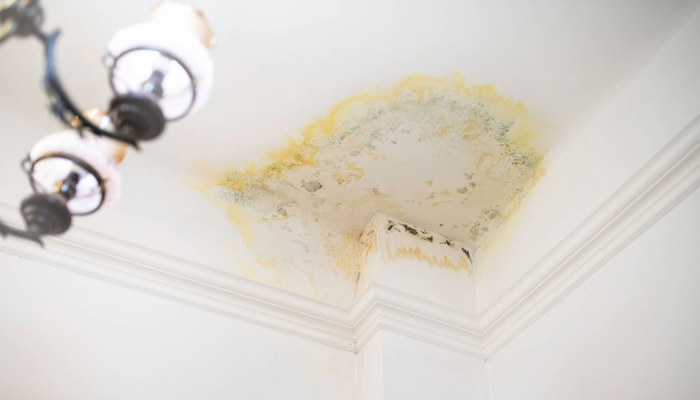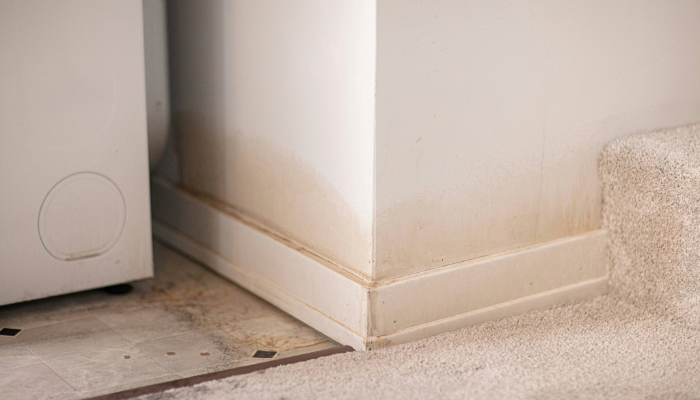
Signs of Hidden Water Damage in Your Home
Spotting the signs of hidden water damage in homes can save you from costly repairs and serious structural issues down the line. While water damage in your home might seem obvious after a major event like a flood, the reality is that it often hides in plain sight — quietly threatening your property’s structural integrity. This guide will help you identify subtle signs of hidden water leaks, know what steps to take next, and understand when it’s time to call in trusted restoration experts like ServiceMaster Restore.

Is Water Damage Always Visible?
Many homeowners believe that water damage is immediately noticeable. Unfortunately, this isn’t always the case. Hidden water damage can occur inside your walls or ceiling, under flooring, or behind large appliances. A leaking pipe, an aging HVAC unit, or even a slow roof leak can silently allow moisture to build up over time. Early detection is critical. The longer excess moisture remains trapped in your home, the more likely it is to cause structural damage, lead to mold growth, and increase restoration costs.
How Do You Tell If You Have a Hidden Water Leak?
If you suspect a hidden water issue, there are a few simple ways to conduct a basic check. Use a moisture meter on suspicious areas like walls, ceilings, or floors to detect trapped moisture. Monitor humidity levels with inexpensive hygrometers; consistently high indoor humidity may signal a leak. Check your water meter by turning off all faucets and appliances, and if the meter still moves, you may have a hidden leak. When in doubt, contact professionals who can perform thermal imaging inspections to locate moisture behind walls and floors without invasive measures.
1. Musty Smells and Damp Odors Around the House
One of the earliest signs of hidden water damage is a persistent musty smell. These odors, often described as mildew-like, suggest excess moisture buildup — even if you can't immediately see water. Musty smells are typically most noticeable in basements, laundry rooms, or areas behind cabinets. If left unaddressed, lingering damp odors often indicate active mold growth, even if no visible mold is yet present.

2. Discoloration and Water Stains on Walls or Ceilings
Another red flag is the appearance of water stains or yellowish-brown discoloration on your wall or ceiling surfaces. These stains may seem small at first but can expand over time, signaling ongoing seepage from the roof, plumbing, or a hidden appliance issue. Keep an eye out for:
Water rings or spots that grow
Discoloration in the same affected areas over time
Repeated patches after repairs, which can point to unresolved leaks
3. Peeling Paint, Bubbling Wallpaper, or Warped Surfaces
When water leaking behind a wall or ceiling goes undetected, it compromises the adhesion of paint and wallpaper. Peeling paint, bubbling textures, or warped drywall are visible warnings that your home’s surfaces are under attack by moisture. Aside from the aesthetic damage, these problems can also contribute to indoor air quality issues and more significant structural integrity concerns if moisture persists.
4. Sudden Drop in Water Pressure or Unexpected Water Bill Increase
If you notice a sudden drop in water pressure, it could indicate a hidden water leak within your plumbing system. Similarly, an unexpected spike in your water bill — without changes in household water use — is often a sign that water is escaping somewhere it shouldn’t.
Monitoring your monthly water usage and quickly addressing unusual changes can help catch problems before they cause serious structural damage.

5. Soft or Sagging Spots in Flooring or Walls
Areas that feel soft, spongy, or unstable underfoot are often the result of long-term water intrusion. Signs include - warped or buckling floors, loosening tiles, or baseboards pulling away from the wall. Over time, these weakened areas can lead to dangerous situations, especially if they affect your home's structural integrity.
How to Tell If Water Damage Is Recent
Identifying whether water damage is new or old can help determine the urgency of repairs. Recent water damage may feel damp but still firm and often smells fresher. Older water damage usually smells musty, feels soft, and may show signs of mold growth. Restoration specialists can use tools like moisture meters and material testing to determine how long an area has been exposed to moisture.
Will Insurance Cover Hidden Water Damage?
Insurance coverage for hidden water damage varies depending on the cause and your policy. Sudden events like burst pipes are usually covered, where gradual leaks or damage due to neglect often are not. It's important to document all visible signs of hidden water damage early and schedule a professional assessment. This increases your chances of a successful insurance claim.
What Is the Average Insurance Payout for Water Damage?
Nationally, insurance payouts for water damage claims range from $3,000 to $10,000+, depending on the severity and location of the damage. Catching problems early can help minimize the size of your claim — and speed up the recovery process. For more tips, check out our guide on filing water damage claims and working with restoration professionals.
How to Find Hidden Water Damage
Finding hidden damage requires vigilance. Here’s a quick recap:
Look, smell, and feel for suspicious signs.
Monitor changes in your home or business, such as warped walls, persistent odors, or peeling paint.
Use a moisture meter or hire experts for a professional thermal imaging inspection.
Protect Your Home from Hidden Water Damage
By staying alert to the top signs of hidden water damage in homes — from musty smells and water stains to peeling paint and sagging floors — you can protect your home from expensive repairs and serious health risks. At the first sign of trouble, don’t wait. Contact the trusted professionals at ServiceMaster Restore for expert inspections, comprehensive water damage cleanup, and restoration services to bring your home back to its best.

